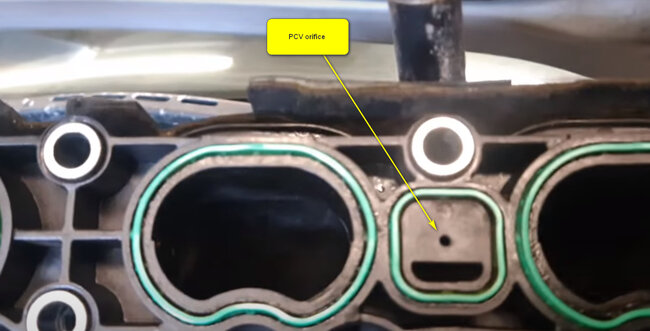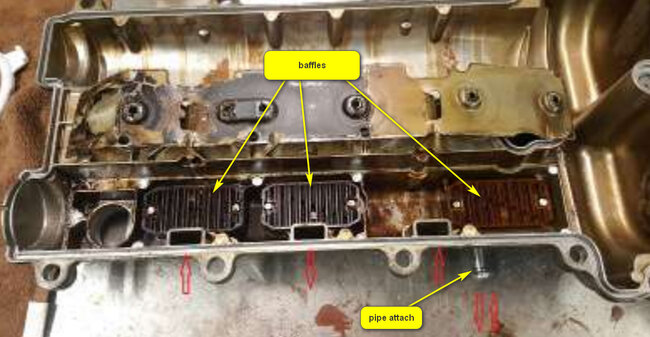Hello,
It sounds like your 2.4 Ecotec engine is suffering from the well-known clogged PCV system issue. The PCV, Positive Crankcase case Ventilation, system is prone to clogging and can cause high crankcase pressures.
It is a 2-part system, pipe to the left of the air intake to the valve cover and the main ventilation valve in the intake manifold.
To clean the intake PCV valve ideally remove the intake manifold, but it can be cleaned in situ too. See image 1
The other part, pipe to valve cover, is easily accessed by disconnecting from air intake and valve cover. Ideally remove valve cover to clean. See image 2.
A few videos:
https://youtu.be/a5gL_OMtFVc?si=bs2lCCnA_a_Xqlen
and
https://youtu.be/1uGTEWWrlSs
and
https://youtu.be/cyoJ02cAQig?si=g305lI4D_8t7FxjR
and
https://youtu.be/eRW5PCgwyhk?si=F7yyUa6cUTe-u0nJ
GM service bulletin:
https://static.nhtsa.gov/odi/tsbs/2015/SB-10057696-3071.pdf
Cheers, Boris
Images (Click to make bigger)
Saturday, September 16th, 2023 AT 1:29 AM




